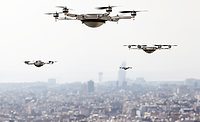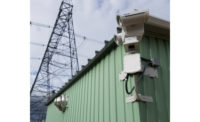How to Respond to and Mitigate Drone Threats

When confronting a drone (Unmanned Air Vehicle/Unmanned Air System) operating in or around their area of responsibility in an unsafe manner, most people would like to bring it down immediately.
Unfortunately, in most situations, it is unlawful to interfere with the flight path of a drone. The most important response that can be done legally is detection.
Detection may be done by a number of different sensor technologies, including acoustic, optical, radio sniffers and radar. Of these, radar is the most robust as it detects the actual moving target by transmitting radio waves that bounce off the drone to the radar. It does not suffer from the environmental effects like acoustic and optical sensors. Radio sniffers can also be quite effective if the radio used by the drone is one known and supported by the radio sniffer. Otherwise, the radio sniffer is not able to properly detect that it is drone. Also, in the case the drone is running silent by navigating using only GPS with no user input, the radio sniffer has no transmissions to detect.
Within radar there are several different technologies available. These include large rotating or electronically scanned radar with ranges of 2km to 4km that cost in the millions. For ranges of up to 1km there is a smaller and much less expensive radar technology called Compact Surveillance Radar (CSR). CSR is able to detect and pinpoint the drone’s GPS location up to 1km away and is better suited for more complex urban environments.
Once you know there is a drone nearby, what is your next action?
The FAA uses the DRONE acronym to help remind those involved of the recommended procedures.
Direct attention outward and upward. Attempt to locate and identify individuals operating the drone.
Report incident to the FAA Regional Operations Center (ROC).
Observe drone and maintain visibility of the device.
Notice features: identify type of device (fixed wing/multi-rotor), its size, shape, color and payload.
Execute appropriate police action.
See FAA UAS LE Reference Card.
In some situations it is possible to take additional measures to minimize the threat a drone may pose. For example, at a data center or corporate campus, the largest threat may be espionage. The drone could deposit WiFi sniffers in close proximity to sensitive areas. Using a video camera on the drone, operators may spy on what is being displayed on people’s monitors or projection screens.
Once a drone is detected by radar, the people in the area are alerted to take appropriate action such as turning off monitors and projectors, lowering blinds, turning off WiFi devices or moving into safe areas.
In case of a stadium or other large event, the main threat posed is panic caused by the drone dropping suspicious looking objects or causing explosions. In either case, early detection is vital to give security personnel time to react before the drone is overhead. By detecting the drone far outside the perimeter it is possible to train high resolution cameras onto the drone and evaluate the type of payload being carried. If carrying just a video camera, law enforcement may be informed and a search for the operator initiated. Otherwise, if the drone is carrying a large payload of what may be explosives or dangerous chemicals, early warning can enable movement of event participants to safer areas.
Another area of current concern is prisons where contraband (weapons, drugs, cellphones) can be delivered to inmates via drones. If a drone is not quickly detected, extreme harm may come to security personnel and other inmates. By knowing that a drone is in the vicinity, security personnel can be alerted; the inmates put into a controlled environment; and, the drone or the contraband recovered.
In all cases, meet well in advance with all stakeholders and your security team. Brainstorm how to respond to different threat postures that the drone may take and document the procedures. Next, conduct training events where all personnel are required to execute the plan of action and see where the security gaps exist. Take action to fill those gaps.
In the future, security professionals need other options available to respond to unsafe drone and operator activity. With the growth of criminal drone use, it is vital to continue to call attention to this imminent threat through government representatives so that more definitive actions may be taken. If you are interested in lending your voice and support in this effort, contact drones@spotterrf.com.
Looking for a reprint of this article?
From high-res PDFs to custom plaques, order your copy today!








